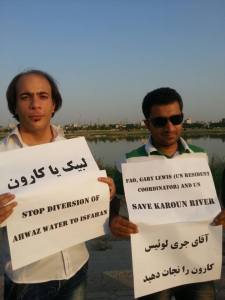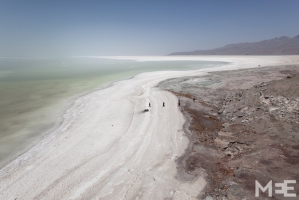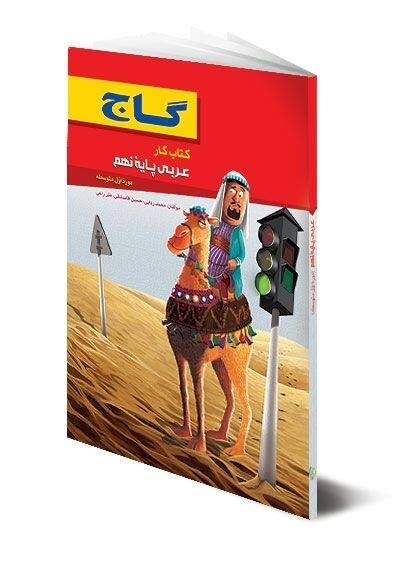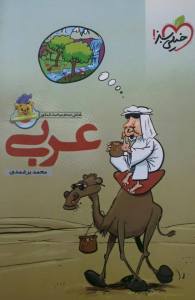Iran’s number one desertification specialist Professor Kurdwani addressed the Iranian government: “I don’t know why they don’t understand that the water is gone. Every time the authorities invite me to attend a conference on the subject I do not attend because it is all over and there is no use holding conferences and seminars anymore. The water table level has decreased to non-replenish-able levels. For example, in the province of Faris, the annual precipitation levels have fallen to 570 cubic millimeters and 450 in the Rafsenjan province and 300 in Tehran. “
In the case of Lake Urmia’s drying out, he said that the lake’s waters will no longer be replenished as the water is diverted by manmade channels to other areas, making it impossible to restore it to its former state. With large amounts of water already being diverted from Ahwazi waterways to other areas in Iran, he warned that the ecosystem should not be further damaged by more redistribution of the scarce waters there.
Kurdwani further warned of the threat of civil war saying that the real war in Iran is the war over water. It is a war that has been ongoing for years in a clandestine manner, but it will become an all-out open war which will destroy Iran, tearing it to pieces and eventually annihilating Iran in the years to come. Professor Kurdwani added: “The essence of the struggle is over water, the war with Saudi Arabia and the US, and even nuclear challenges are not actual threats. The real threat to Iran is water scarcity and not America or Israel!”
About the nature of the current war for water in Iran Professor Kurdwani said that there is, in fact, a cold war over water in Iran covered up by the media with great efforts and downplayed within the shadow of the haughty nuclear issue. Nevertheless this water war will widen and will come out of the closet to the open in the coming five years. And it is the real threat to Iranian national security and sovereignty. However, the politicians in charge in Iran will try to keep it under control and ensure that their benefits remain in place by sucking up the water resources of all the drought-stricken provinces such as the Abu Shahr province.

This is the horrible fate of the Karoon River, which was once Ahwaz’ busiest waterway, teeming with marine life, as well as being the only navigable river in the region.
It is worth noting that NASA stated in a report that Iran is 8 years into a drought that will last for the coming thirty years which will lead to Iran’s complete desertification and that Iran will cease to exist due to water and starvation within the next ten years. The average surface precipitation rate worldwide is 800 cubic millimeters whereas in Iran the average is 250 cubic millimeters. As for the rate of water evaporation, NASA stated that Iran has a rate of surface water evaporation four times greater than the world average.
This comes at a time when the Iranian regime supported by Persian groups in the provinces of Isfahan, Kerman (Rafsanjani’s hometown) and Yazd (Khatami and Ahmadi Najad and Rouhani’s hometown) also supported by the Wilayat al Faqih Supreme Leader of Iran’s institutions have stolen the waters of the longest rivers in AL Ahwaz region namely the rivers Karoon and Al Karkheh by diverting their waters from Al-Ahwaz to the Persian provinces of Fars, Isfahan and Kerman thus drying the largest wetlands in the Middle East and completely annihilating 95% of Ahwazi marshlands between Al-Ahwaz and Iraq and thus transforming Al-Ahwaz into the number one polluted region in the world.
 The stealing of the waters of Ahwaz and the drying of its marshes has led to a drastic increase in temperatures in Al-Ahwaz where according to official sources a record high of 67 degrees Celsius was registered just a few months ago in the city of Mahshor just 80KM from Ahwaz city. This is a grave alarming indicator for the Arab population of Al-Ahwaz for it signals the beginning of a mass exodus of Arab Ahwazis from their land towards the Persian Farsi provinces where the water of Al-Ahwaz has been diverted and where the Arabs of Al-Ahwaz will gradually lose their identity and Ahwaz itself will be depopulated.
The stealing of the waters of Ahwaz and the drying of its marshes has led to a drastic increase in temperatures in Al-Ahwaz where according to official sources a record high of 67 degrees Celsius was registered just a few months ago in the city of Mahshor just 80KM from Ahwaz city. This is a grave alarming indicator for the Arab population of Al-Ahwaz for it signals the beginning of a mass exodus of Arab Ahwazis from their land towards the Persian Farsi provinces where the water of Al-Ahwaz has been diverted and where the Arabs of Al-Ahwaz will gradually lose their identity and Ahwaz itself will be depopulated.
In addition, oil exploration activities in the last ten years in Hor Al-Azim wetland in Al-Ahwaz has transformed it into a complete desert. Hor Al-Azim is one of the most important wetlands in the Middle East and among few the surviving wetlands of Mesopotamia. However with the starting of drilling, oil prospecting projects, construction of oil facilities as well as building roads at the heart of the wetland which separated it into several disconnected areas, the wetland has been entirely dried up. Hor Al-Azim wetland was a paradise that was taken away from Ahwazis.The Ahwazi Arabs for thousands of years used to depend on the wetland resources including fishing and farming to make their livelihood, but the oil companies in less than ten years have turned it into a big desert.
The oil companies are deliberately draining all the wetland and do not pay the slightest attention to the life of the wetland and its Ahwazi Arab people. All authorities and directors who are working in the fields of the oil companies are Persians; for this reason, it does not matter to them at all what happens to the Ahwazi local people.
 Ahwazi people say that at first they thought that the oil companies that came here would bring great benefits to the area, and that they would see improvements and their villages and towns would be developed. We thought tourism would be encouraged and tourists would come from everywhere, but what resulted was the opposite of our expectations, and the Iranian oil companies destroyed all nature barbarically.
Ahwazi people say that at first they thought that the oil companies that came here would bring great benefits to the area, and that they would see improvements and their villages and towns would be developed. We thought tourism would be encouraged and tourists would come from everywhere, but what resulted was the opposite of our expectations, and the Iranian oil companies destroyed all nature barbarically.
People of Baluchistan also have not survived from the water crisis following the drying up of Hamun Lake. Hundreds of the local people had to leave the homeland to save their lives from the drought, dust storms, and epidemic disease that allegedly claimed the lives of many Baluchis. The Iranian regime had not taken any tangible measures to revive Hamun Lake in Sistan-Baluchestan. As a result, Hamun Lake dried up, leading to the death of fauna and flora in the area of Sistan-Baluchistan.
Iran suffers grave water shortage, very extreme that nearly throughout the country could be unlivable and millions driven to emigrate. The regime officials say, “Our central problem is [the water crisis] that endangers the national security as it is the issue of living in Iran.
Water experts say if Iran doesn’t thoroughly change its water usage policy, 50 million people – 70 percent of Iranians – will have no option than to abandon the country. Iran is facing a water shortage of significant proportions; however, so invisible steps were being taken by the regime to address the factors that have diminished the country’s water supply to emergency levels. Experts several times cautioned that the current water shortage is going to put the already arid country on the verge of becoming a huge barren desert. As regime fears more likely a popular unrest sweeping the country it has been attempting not to amplify the crisis and hide it.
In many areas in the country such as Ahwazi Arab areas and Sistan and Baluchistan province, areas have remained on water tankers for their daily water supply. This increasing water crisis in recent years have triggered protests in Ahwaz, and other provinces in Iran as people shown their displeasure at the worsening condition clashed with police security forces who aimed at dispersing the angry protesters. No doubt if the water crisis continues to persist it could lead to popular water riot as already happened in Ahwaz, when Ahwazi people protested against the regime policies in rerouting the courses of Karoon River that resulted in it to be nearly dried up.
 Ahwazis suffer grave environmental challenges, including pollution, erosion, desertification, and most importantly, drought and water shortages, which have intensified poverty and starvation by decreasing agricultural crop and Ahwazi farmers’ incomes. Many of these difficulties have been provoked by the intentional regime policies in line with displacing Ahwazis.
Ahwazis suffer grave environmental challenges, including pollution, erosion, desertification, and most importantly, drought and water shortages, which have intensified poverty and starvation by decreasing agricultural crop and Ahwazi farmers’ incomes. Many of these difficulties have been provoked by the intentional regime policies in line with displacing Ahwazis.
As Iranian desertification accelerates due primarily to regime policies, regime officials continue to ignore the imminent natural catastrophe which endangers the entire country. The water crisis in Iran could end up causing a civil war which will backfire against the regime. This is a much greater challenge than the nuclear weapons issue. All regions of Iran will be affected as the water crisis gets worse and the already poor economic situation of the country will deteriorate. Economic sanctions can be lifted, but water scarcity will remain. This will also cause people to emigrate from Iran.



